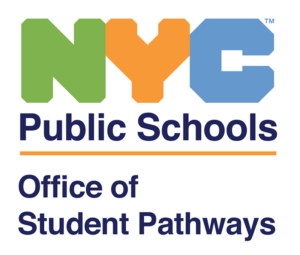Work-Based Learning - Career Mentoring Activity Guide

Career Mentoring Fact Sheet
What is Career Mentoring?
Career Mentoring is a Career Exploration activity in which a student is matched one-on-one or in small groups with an adult professional to explore potential careers and related educational issues. Different than programs such as Big Brother, Big Sister, the career mentor serves as a career resource by sharing insights and providing guidance about the workplace, careers and postsecondary education/training. This is accomplished through formal and informal meetings organized at the school, in the workplace or online, but never in an unsupervised environment or the home. (Sometimes a mentor may work with and support a small group of students.)
The development of a trusting relationship between the student and the mentor is the key to a successful experience. Designed to meet specific learning outcomes, career mentoring is educationally rich, is tied to the curriculum, and helps students connect what they’re learning in school with the workplace.
Virtual Note: Students who are currently paired with a Career Mentor may continue to receive support via telephone or some other technology if the necessary permissions, protections and guidance are in place to promote student safety.
Career Mentoring is designed to:
- Give students exposure to jobs, careers, and industries.
- Offer the opportunity to build a relationship with a caring and knowledgeable adult.
- Offer a chance to practice communication skills and develop professional skills.
- Help students make the connection between school and the workplace.
- Inform career planning.
Career Mentoring is structured to:
- Build self-esteem, self-worth, confidence and flexibility.
- Build occupational knowledge.
- Enable students to begin identifying areas of career interest.
- Allow for the mentor and mentee to select each other.
- Offer positive life outcomes for students.
- Build knowledge about the education and training needed for a particular job, career path and entry into the industry.
Career Mentoring is supported by:
- Classroom preparation and reflection upon the experience verbally and in writing.
- A long-term commitment from an adult role model (generally at least a year).
- A focus on building trust and respect with each other.
- The setting of clear and reasonable expectations for students and their mentoring partner.
- Routine meetings or communication with enough regularity to develop a strong relationship.
Career Mentoring is connected to:
- Individual career development/training plans.
- Future work-based learning activities.
- The student’s next steps.
Career mentoring is one activity in the continuum of authentic work-based experiences provided to all students engaged in career-related programs or course of study in New York City Public Schools.
Career Mentoring Activities are recognized as an “accepted and valid WBL activity” by NYSED and the New York City Public Schools for specific credit purposes.
Career Mentoring Formats
Required Materials
Implementation Materials
Support Materials

Quick tips for Work-Based Learning Coordinators* to ensure successful Career Mentoring
Before
During
After
Virtual Note
Students who are currently paired with a Career Mentor may continue to receive support via telephone or some other technology if the necessary permissions, protections and guidance are in place to promote student safety.
*In New York State, this includes certified work-based learning coordinators and others who facilitate, arrange and support work-based learning activities for students.
